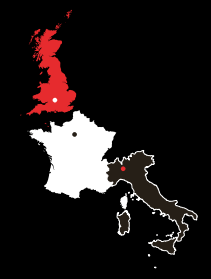The University of Huddersfield is an educational hub at the center of the West Yorkshire town. The past decade has seen the University expand at a exponential rate, these expansions include the signature £27.5m Oastler Building. The latest audio visual technology was required to provide students with the best learning environment. The work has resulted in the nomination for ‘Best large-scale AV Project or Event’.
ST Engineering Antycip recently installed a state-of-the-art VR CAVE system at the University of Huddersfield. The VR CAVE, housed in the School’s Phidias Lab, was installed on behalf of its client Roche AV.
Designed to function as an experimental AR and head-mounted display (HMD) facility, the Phidias Lab promotes the development of the school’s digital strategy by encouraging the creation of digital content and immersive VR. It is home to an eight-screen video wall with several modes for exhibiting and presenting, a motion capture area, a feature sound and lighting system and now, a highly advanced immersive CAVE system.




















